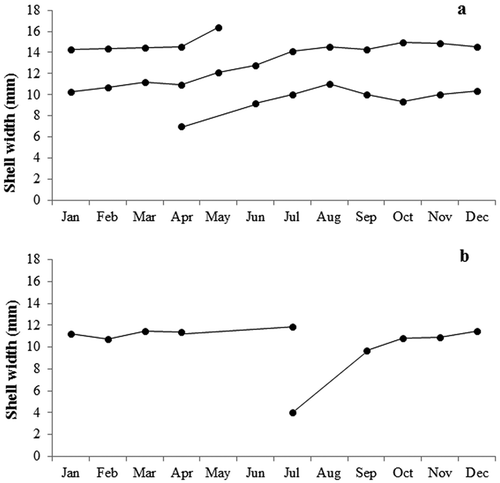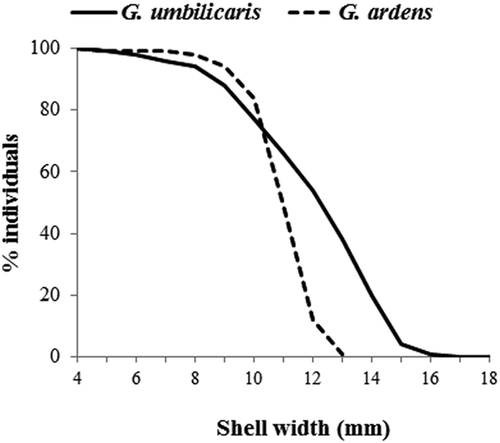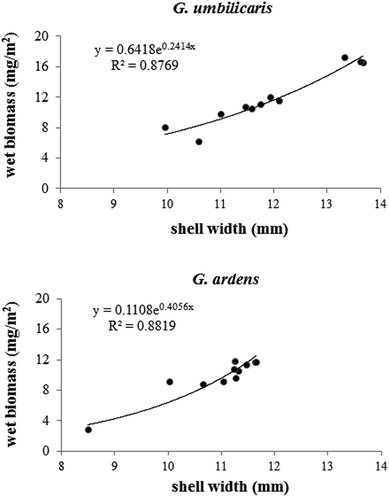Figures & data
Figure 1. Gibbula umbilicaris and G. ardens annual variations in abundance (number of individuals) for each month, obtained by pooling data from all sampled depths.

Figure 2. Monthly variations in abundance (no. ind./20 m2) of Gibbula umbilicaris and G. ardens, at each sampled depth.
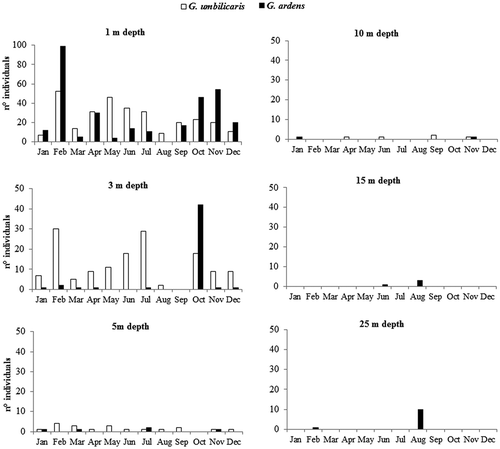
Figure 3. Size-frequency distributions of Gibbula umbilicaris for each sampled depth and month, with the number of collected specimens (n), from the whole transect.
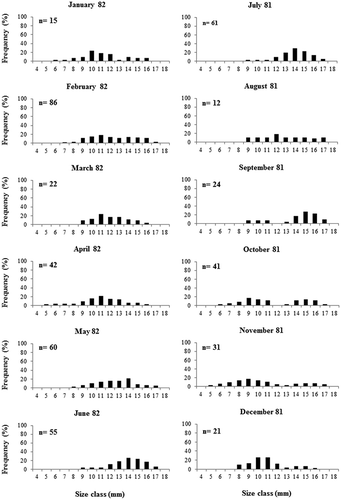
Figure 4. Size-frequency distributions of Gibbula ardens for each sampled depth and month, with the number of collected specimens (n), from the whole transect.

Figure 5. (a) Gibbula umbilicaris and (b) G. ardens growth curves of the identified cohorts, obtained by considering pooled data for all the sampled depths. The dots represent the monthly modal size of width-frequency distributions.
